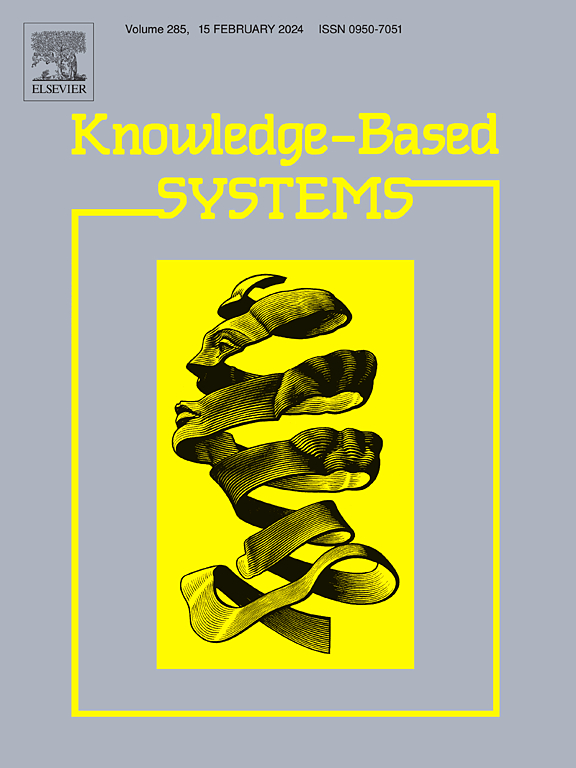ESARSA-MRFO-FS:使用期望sarsa强化学习进行特征选择的优化蝠鲼觅食优化器
IF 7.6
1区 计算机科学
Q1 COMPUTER SCIENCE, ARTIFICIAL INTELLIGENCE
引用次数: 0
摘要
借助计算机进行疾病预测在这一领域取得了重大进展;然而,它仍然需要更准确地识别每个数据特征。在过去的几年里,基于机器学习的医学诊断越来越依赖于数据集而不是算法。因此,数据集中的特征越多,模型训练过程就越困难。特征选择(FS)策略可以在训练前剔除不需要的特征,以提高模型的性能。由于特征数量的大量增加,FS导致了一个复杂的组合问题,这是np困难的。本研究的主要目标是建立一个新的框架,以提高蝠鲼觅食优化器(MRFO)算法的性能。通过探索-利用切换调整的方法,使用期望状态-行动-奖励-状态-行动(ESARSA)强化学习策略,使该过程成为最有效的过程。该研究使用了12个数据集以及两个分类器(K-Nearest-Neighbor和Decision-Tree),有和没有超参数调整。研究比较了无特征选择、原始MRFO算法和提出的ESARSAMRFO-FS算法三种特征选择方法的性能。结果表明,在分类器和优化场景下,ESARSA-MRFO-FS是三种算法中最有效的。此外,本文还比较了MRFO和ESARSA-MRFO在44个基准上的性能。在五个功能上,ESARSA-MRFO优于MRFO。结果表明,该方法具有较好的准确性和较低的处理成本,是一种有效的医学诊断特征选择方法。本文章由计算机程序翻译,如有差异,请以英文原文为准。
ESARSA-MRFO-FS: Optimizing Manta-ray Foraging Optimizer using Expected-SARSA reinforcement learning for features selection
Disease prediction with the help of computers has achieved significant progress in this area; however, it still requires a more accurate identification of each data feature. In the past few years, ML-based medical diagnoses have become increasingly dependent on the datasets rather than the algorithms. Consequently, the more features in a dataset, the more difficult the model training process will be. A feature selection (FS) strategy can be used to eliminate unwanted features before the training in order to improve the model performance. Due to the great increase in the number of features, FS causes a complex combinatorial problem, which is NP-hard. The primary goal of this research is to create a novel framework for improving the Manta-ray Foraging Optimizer (MRFO) algorithm’s performance. By the method of exploration–exploitation toggle adjustments, this process becomes the most efficient one by using the Expected State–action-reward-state–action (ESARSA) reinforcement learning strategy. The study employed 12 datasets as well as two classifiers (K-Nearest-Neighbor and Decision-Tree), both with and without hyperparameter adjustment. The study compared the performances of three feature selection methods: no feature selection, the original MRFO algorithm, and the proposed ESARSAMRFO-FS algorithm. The results revealed that ESARSA-MRFO-FS is the most effective of the three algorithms with classifiers and optimization scenarios. Besides, experiments comparing MRFO and ESARSA-MRFO performance on 44 benchmarks are presented in the article. In five functions, ESARSA-MRFO outperforms MRFO. These results confirm that the proposed method is efficient for feature selection in medical diagnosis because of its accuracy and low processing costs.
求助全文
通过发布文献求助,成功后即可免费获取论文全文。
去求助
来源期刊

Knowledge-Based Systems
工程技术-计算机:人工智能
CiteScore
14.80
自引率
12.50%
发文量
1245
审稿时长
7.8 months
期刊介绍:
Knowledge-Based Systems, an international and interdisciplinary journal in artificial intelligence, publishes original, innovative, and creative research results in the field. It focuses on knowledge-based and other artificial intelligence techniques-based systems. The journal aims to support human prediction and decision-making through data science and computation techniques, provide a balanced coverage of theory and practical study, and encourage the development and implementation of knowledge-based intelligence models, methods, systems, and software tools. Applications in business, government, education, engineering, and healthcare are emphasized.
 求助内容:
求助内容: 应助结果提醒方式:
应助结果提醒方式:


